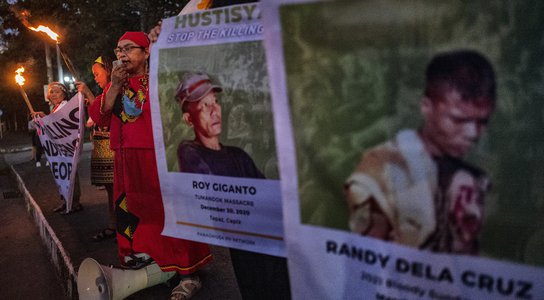Where are defenders being killed?
Which industries are linked to the killings?
How are defender killings changing over time?
Reports
In order to stop this violence from happening in future, we first need to understand it – where it is occurring, which industries are responsible, and how it has changed over time. Visit our Annual Report Archive to find out about each year in more detail.
Methodology
We define land and environmental defenders as people who take a stand and carry out peaceful action against the unjust, discriminatory, corrupt or damaging exploitation of natural resources or the environment. Land and environmental defenders are a specific type of human rights defender – and are often the most targeted for their work.
Our definition covers a broad range of people. Defenders often live in communities whose land, health and livelihoods are threatened by the operations of mining, logging, agribusiness companies or other industries. Others will be defending our biodiverse environment. Others will be supporting such efforts through their work – as human rights or environmental lawyers, politicians, park rangers*, journalists, or members of campaigns or civil society organisations, for instance.
- Global Witness identifies cases of killings by searching and reviewing reliable sources of publicly available online information, through the following process:
- We identify datasets from international and national sources with details of named human rights defenders killed, and then research each case.
- We set up search-engine alerts using keywords and conduct other searches online to identify relevant cases across the world.
- Where possible, we check with in-country or regional partners to gather further information on the cases. We work with approximately 30 different local, national and regional organisations across over 20 countries to do this.
- To meet our criteria, a case must be supported by the following available information:
- Credible, published and current online sources of information.
- Details about the type of act and method of violence, including the date and location.
- Name and biographical information about the victim.
- Clear and documented connections to an environmental or land issue.
Sometimes we will include a case that does not meet the criteria outlined above, where a respected local organisation provides us with compelling evidence that is not available online, based on their own investigations.
Our data on killings is likely to be an underestimate, given that many murders go unreported, particularly in rural areas and in particular countries. The figures presented should be considered as only a partial picture of the extent of killings of environmental and land defenders across the world.
Our data may also differ from that being gathered by other NGOs due to variations in methodologies and verification techniques. Some NGOs document attacks against all human rights defenders, while Global Witness data only covers defenders working on land or environmental issues.
*In some areas of the world, indigenous peoples have been, and continue to be, expelled from their land for the creation or maintenance of conservation reserves. Global Witness clearly does not endorse this approach to environmental protection. We do not include deaths where the victim was reportedly linked to violence against indigenous or local communities. We do, however, include cases of government officials and park rangers who have been specifically threatened or targeted while trying to protect forestland and biodiversity, where there is no known conflict with indigenous or local communities.














